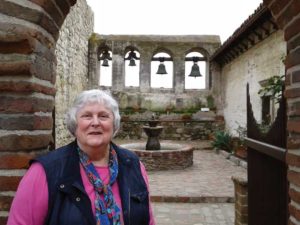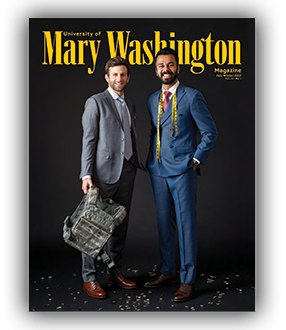
Pipe organ expert Peggy Kelley Reinburg consults on restoring historic organs and building new ones.
Arp Schnitger was one of the most prolific and influential organ builders of the late 17th and early 18th centuries, a craftsman whose work fueled continued interest in Baroque instruments centuries after his death. Yet Peggy Kelley Reinburg ’58 could find only one article on the German artisan as she toiled away on a paper for her sophomore year organ class.
She managed to stretch what little information she could find into eight pages and earned an A on the assignment. But the dearth of knowledge gnawed at her long after she graduated from Mary Washington with a bachelor’s degree in music and minors in languages and psychology.
“I couldn’t get the information I wanted, and I was just so eager to know about these wonderful instruments,” Reinburg said. The Norfolk resident went on to write the definitive book on Schnitger while performing on his stunning creations – and those of other builders – in churches, cathedrals, and concert halls all over the world.
“The organ is a very complex instrument. You can accomplish a lot more sound-wise on it,” said Reinburg, who studied piano for a decade as a child before adding organ to her repertoire the summer before her freshman year. “I became fascinated at Mary Washington with what’s behind the console at which you sit. I got hooked on it.”
After graduating, Reinburg worked as a church organist in Richmond and Washington, D.C., and earned a master’s degree in sacred music and musicology from Northwestern University. She served as the college organist and an associate professor of organ at Mary Washington for 15 years, starting in 1971, and simultaneously served on the music faculty of The George Washington University before teaching at Duquesne University.
Pipe organs aren’t exactly portable, so to play them, Reinburg needed to travel. The Richmond native first went to Europe in 1974 and then roughly every other year after, giving recitals and lectures, touring museums, and visiting seven different music archives in search of historical documents for her book about Schnitger, which was published in 1982.
Reinburg was awestruck by the beautiful instruments. A highlight for her was playing the Trost organ at Altenburg castle in Germany, the same organ that composer Johann Sebastian Bach had played in 1739.
“To have touched and played the organ Bach had his hands on” was thrilling, she said. “Being in a city with all the wonderful artwork in the churches, just to see this wonderful artwork from people whose names we hear in art history, it’s just amazing. It grabs you so.”
Her extensive knowledge of the mechanics of organs and the meticulous engineering required to push the wind through the pipes has made her a sought-after consultant for churches and universities seeking to restore historic organs or build new ones. She helped launch Pipe Organ Encounters for Youth, a program of the National American Guild of Organists that encourages young musicians to take up the organ. And in 1999, she instigated a Tidewater concert series, part of the Virginia Arts Festival, which features organists and musicians from the Virginia Symphony Orchestra.
Playing the organ is “another art form, which makes it wonderful because you feel like you’re putting something good out there into the universe,” Reinburg said. “I’m very grateful for the road I took.”
– Edie Gross
